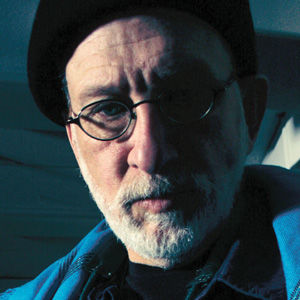Torah portion upends gender stereotypes
Published April 4, 2019
Pull up a chair. I have a story to tell.
I was traveling around Mount Ararat near the Armenian border on my way to Kurdistan just after the Turks released their grip on the ancient land. You will recognize Mount Ararat from the biblical account of Noah, and the town I came to, Mosul, from the neobiblical accounts of CNN and other news outlets of recent years.
It was in the years before Mosul became a part of our news vocabulary and the struggle with the Islamic State of Iraq and the Levant, also known as ISIS.
There were Jews in Mosul at the time, and many Jews were in the Kurdistan region although the migration to Israel was inexorable and constant, especially after the founding of the Jewish State. The Jews of Kurdistan spoke a dialect of Aramaic sometimes called Kurmanji, and they referred to themselves as anshin didan, “our people” in Aramaic.
Aramaic is one of our noblest languages, the spoken language rarefied but not extinct. A version of Aramaic referred to as Syriac can be seen written on the altar of St. Raymond’s Maronite Church here in St. Louis. My neighbors in Detroit also spoke a version of Aramaic called Chaldean. I am working on a CD with my musical conspirators of songs all sung in Aramaic. Much of the Talmud is given in Aramaic. No longer a spoken form among us, it is alive and well in our texts.
Benjamin of Tudela, the 12th century Rick Steves of the Jewish world, traveled to Kurdistan and stopped at Mosul, visiting Nineveh (Jonah story) on the eastern bank of the Tigris. I followed Benjamin of Tudela 18 centuries later on a journey of secret destinations, representing the East Asia Trading Co.
In Mosul, I heard a proud tale of Asnat Barzani (sometimes Barazani), who lived in Mosul from 1590 to 1670. She was the daughter of Rabbi Shmuel ben Netanel Ha-Levi, a scholar and mystic who founded a yeshivah to lift up Torah life in Kurdistan.
She married Rabbi Yakov Mizrahi, one of her father’s prize students. When her husband died, she became the leader of the yeshivah in Mosul. She was fluent in Torah, Talmud and Kabbalah; it is said she knew the secret names of God. She sent her son to Baghdad, where he would be father to generations of scholars in the rich Jewish life of that city that continued well into the 20th century. On my visit, they spoke of her in the present tense.
They called her Tanna’it, a female version of a teacher similar to a rabbi in the Talmud. She was also a poet and created poems written in Hebrew in the rhymes and meters of Hebrew and Aramaic. Her gravesite in northern Iraq became a pilgrimage site for our people in Kurdistan and elsewhere.
Why am I telling you this story, and why in this week of Shabbat Tazria? All these stories may send worlds crashing together. Come closer.
Because you may not know this story. Because none of us may be accustomed to thinking about a vibrant Jewish life in Mosul, in our time the site of a hard-fought battle with ISIS to take back Kurdistan for the Iraqis.
We might not be accustomed to thinking about a woman as head of a yeshivah producing generations of scholars and overseeing the education of Jewish culture in the mountains of northern Mesopotamia.
We might not be accustomed to thinking about women as heads of Middle Eastern yeshivot in the 17th century, as holding those positions, as being masters of Kabbalah, as being the engines of leadership and scholarship in those communities.
Now read the language of the text opening the portion Tazria. The portion opens with “when a woman makes seed” Leviticus 12:2. Stop there. In Hebrew as in English, we may not be accustomed to thinking of women as making seed, it may be more gender fluidity than we associate with Levitical texts. Rashi (11th century commentator) goes to some length to tell us it’s similar to seed because seed is associated with a masculine vocabulary. The plain sense of the biblical text reads: when a woman makes seed.
We might not think of women making seed. It was a problem for Rashi in the 11th century, and if we do not see that the sex-linked stereotypes we hold are ancient, we may be stuck with more difficulties than textual ones. In the biblical text, there is a hint noticed by Rashi that we are somewhat limited by language and, inadvertently, we may have stumbled on a gender fluidity that would articulate in the future.
Their future is now. Our stereotypes? Gender inflexibility? They don’t hold. They certainly don’t hold now. Say Shabbat Shalom to Parashat Tazria, in which when a woman makes seed, it’s an opening.
Rabbi James Stone Goodman serves Central Reform Congregation and is a past president of the St. Louis Rabbinical Association, which coordinates the Light’s d’var Torah.














